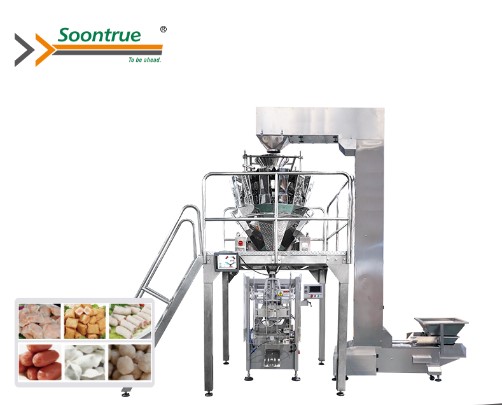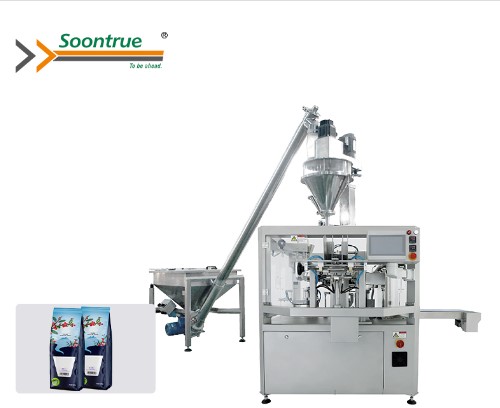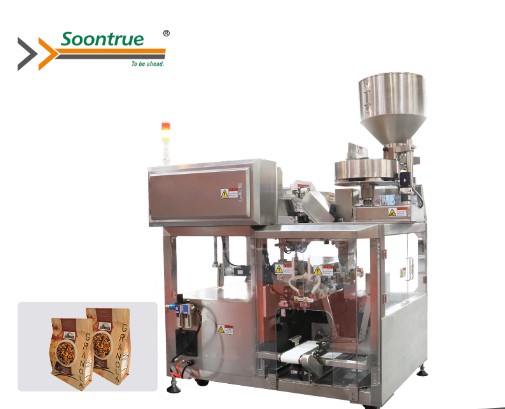How To Maintain The Vertical Packaging Machine?
Vertical packaging machines are vital assets in various industries, streamlining the packaging process and ensuring efficiency in product handling. Regular maintenance is required to extend their life and improve their performance. Proper maintenance prevents costly downtime and ensures the quality and consistency of packaged products. In this guide, we'll explore the key steps to maintain your vertical packaging machine effectively.
Establish a Maintenance Schedule
Creating a maintenance schedule ensures that your vertical packaging machine receives the attention it needs at regular intervals. Begin by studying the manufacturer's recommendations for maintenance frequency and duties. Then, tailor the plan to your machine's exact needs and usage frequency.
Daily tasks may include basic cleaning, inspection of critical components, and verifying operational parameters such as temperature and speed. Weekly maintenance might involve more thorough cleaning and lubrication of moving parts. Monthly and annual tasks could include comprehensive inspections, calibration checks, and replacement of wear parts.
Cleaning and Sanitization
Cleaning and sanitization are paramount for ensuring product safety and preventing contamination. Develop a systematic cleaning procedure that covers all accessible surfaces of the machine. Use cleaning chemicals and sanitizers that have been approved for use in food or pharmaceutical environments, as applicable.
Pay close attention to areas where product residue tends to accumulate, such as sealing mechanisms, product contact surfaces, and conveyor belts. Remove debris, dust, and leftover materials thoroughly to prevent cross-contamination and ensure the integrity of packaged products.
Inspection of Wear Parts
Wear parts can deteriorate over time owing to friction, heat, and mechanical stress. Regular inspection of wear parts is crucial for identifying signs of wear and addressing them before they lead to operational issues or product defects.
Inspect components such as sealing jaws, cutting blades, belts, and gears for wear, cracks, or damage. Look for signs of uneven wear or misalignment, as these can suggest underlying concerns with the machine's performance. Replace worn-out or damaged parts promptly to avoid unexpected breakdowns and minimize production downtime.
Lubrication
Lubrication is critical for decreasing friction, eliminating wear, and maintaining the smooth operation of moving elements in a vertical packaging machine. Refer to the manufacturer's recommendations for the type of lubricants to use and the intervals for lubrication.
Apply lubricants sparingly to avoid excess buildup, which can attract dust and debris, leading to clogs and mechanical issues. Focus on lubricating key components such as bearings, shafts, chains, and gears, following the manufacturer's guidelines for proper application techniques.
Calibration and Adjustment
Calibration ensures the accuracy and consistency of the vertical packaging machine's weighing, filling, and sealing processes. Regular calibration checks help to maintain product quality and avoid overfilling or underfilling, which can result in waste or noncompliance with regulatory norms.
Use calibrated weights and tools to verify the accuracy of weighing systems and adjust as necessary. Check and adjust the temperature, pressure, and speed parameters to ensure optimal performance and conformity to packing criteria.
Training and Operator Awareness
Proper operator training is crucial for the vertical packing machine's safe and effective functioning. Provide comprehensive training on machine operation, safety protocols, and maintenance procedures to all personnel involved in its operation.
Ensure that operators are familiar with the machine's controls, indicators, and emergency shutdown procedures. Emphasize the necessity of doing routine inspections, reporting any problems, and adhering to maintenance schedules. Regular refresher training sessions can help reinforce knowledge and ensure that operators stay up-to-date with best practices and safety guidelines.
Documentation and Record-Keeping
Maintaining accurate records of maintenance activities is essential for tracking the machine's performance, identifying trends, and facilitating troubleshooting. Keep detailed records of all maintenance work performed, including dates, tasks completed, and any problems encountered.
Document any abnormalities observed during inspections, as well as the corresponding corrective actions taken. Include details about part replacements, calibration adjustments, and other maintenance-related activities. Use this data to optimize maintenance schedules, identify areas for improvement, and make informed decisions regarding repairs or upgrades.
Conclusion
Regular maintenance is indispensable for preserving your vertical packaging machine's functionality, reliability, and longevity.If you are looking for a new vertical packaging machine, Soontrue is ideal for you. We are devoted to providing various food packaging machines including vertical packaging machines. Choose our products and improve your work efficiency now!





